Land use policy key to reining in global warming, U.N. report warns
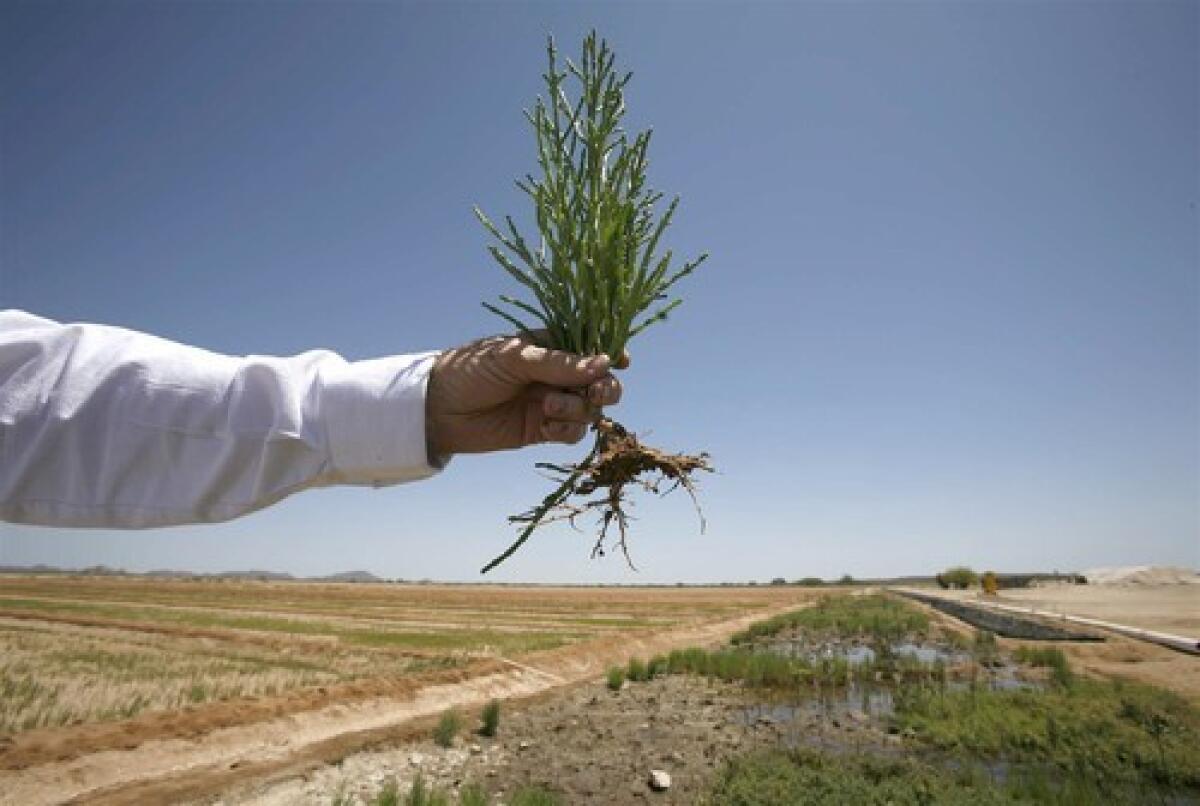
- Share via
Slashing greenhouse gas emissions from cars and power plants won’t be enough to avoid the worst effects of climate change. To meet the goals of the Paris climate accord, experts say, humanity also needs a new approach to managing the land beneath its feet.
A sweeping new report from the United Nations’ Intergovernmental Panel on Climate Change highlights the myriad ways that rising temperatures have impacted agriculture, wildfire risk, soil health and biodiversity. The report also examines how land and its uses can exacerbate the effects of global warming — or help mitigate them.
“It tells us that land is already doing a lot of service for us, but also that we can do a lot with land,” said Louis Verchot, a forester at the International Center for Tropical Agriculture in Palmira, Colombia.
A summary of the IPCC’s assessment was released Thursday after a marathon overnight negotiating session in Geneva. It will inform United Nations climate negotiations in Santiago, Chile, later this year, when countries will revisit their pledges to reduce emissions.

One of the report’s major themes is that forests play an important role in absorbing the carbon dioxide generated by human activities, and protecting them is crucial to reining in warming.
The report also emphasizes the need for a new approach to agriculture that would feed a growing population while using natural resources more sustainably.
“Limiting global warming to 1.5 or even 2 degrees [Celsius] will involve removing carbon dioxide from the atmosphere, and land has a critical role to play,” said Jim Skea, co-chair of the climate change mitigation working group.
Over the last 150 years, temperatures on land have increased by about 1.5 degrees Celsius — almost twice as fast as they have for the planet as a whole, according to the report. This warming has resulted in more extreme weather events and has shifted the ranges of plants, animals, pests and diseases.
Human activities have increased the amount of carbon dioxide, methane and nitrous oxide emitted from land. Deforestation releases carbon stored in trees and soil, and agriculture accounts for about a quarter of all human-caused greenhouse gas emissions.
But the landscape has helped too, absorbing about 22% of the carbon that humans have emitted, said Verchot, who helped write the new IPCC report.
“We’re currently getting a free subsidy from nature on our economic activities,” he said.
Those benefits could be lost with unabated warming. But they could also be preserved through swift climate action and smart land management, the report authors concluded.
“There are high returns for early action,” said Valérie Masson-Delmotte, co-chair of the IPCC’s physical science working group.
Indeed, a growing body of scientific evidence shows that rethinking how we use the landscape will be critical for preventing dangerous levels of warming.
A 2017 study concluded that land-based climate solutions could deliver a third of the greenhouse gas reductions needed by 2030 to keep the world on track to the meet the goals of the Paris accord, which are to keep warming well below 2 degrees Celsius above preindustrial levels. About half those reductions could be accomplished for less than $100 per ton of avoided CO2 emissions, and some for as little as $10 per ton.
Protecting and expanding forests is at the top of the list.
“If we are interested in curbing the rise of carbon dioxide in the atmosphere, plants — and particularly trees — are a good way to do that,” said William Schlesinger, a biogeochemist and president emeritus of the Cary Institute of Ecosystem Studies, an independent environmental research organization based in Millbrook, N.Y.
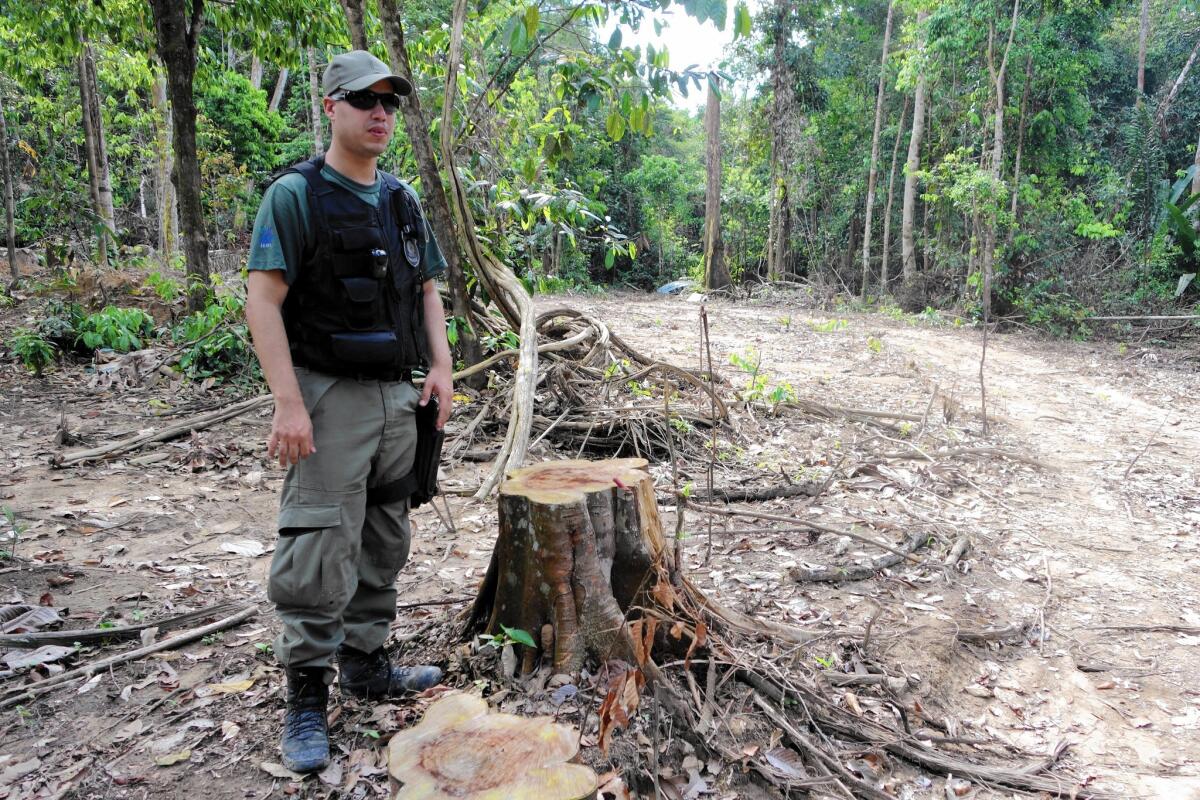
Halting deforestation is a pressing priority. Forests like the Amazon hold tremendous amounts of carbon. They also cool their surrounding areas and increase local rainfall. Yet they are disappearing fast.
Deforestation rates in Brazil and Colombia have increased dangerously in the last three years, and especially in the last 12 months, said Carlos Nobre, an Earth systems scientist at the University of Sao Paolo who was not involved with the report. “That’s very worrying.”
If more than 20% or 25% of the trees are lost, large swaths of the world’s largest rainforest could transition to a degraded savanna and expel a huge burst of carbon into the atmosphere, Nobre said.
Stopping deforestation will take convincing people that forests are worth more than the land they occupy.
“Forests do a lot of things [besides] taking carbon dioxide out of atmosphere,” Schlesinger said. They provide clean water and flood protection for free. They offer opportunities for ecotourism. And they could be used to produce sustainable timber.
The report lays out possible ways to quantify the value of forests through policies such as payments for ecosystem services, said report coauthor Pam McElwee, an environmental scientist at Rutgers University.
Restoring degraded forests also has great potential to mitigate climate change, the report noted. A recent study found that Earth’s landscapes could support up to 500 billion additional trees, which would remove roughly two-thirds of the carbon that humans have pumped into the atmosphere.
“These numbers are big, and that’s something to be excited about,” said Katharine Mach, a climate change scientist at Stanford University who was involved in planning the IPCC report.
But, she cautioned, it’s important to have realistic expectations. Land has to serve many purposes in addition to absorbing carbon, she said.
“If you say climate is No. 1 when it comes to land, everyone would look at you with crossed eyes,” she said.
There is already intense competition for land in some regions of the world, and that could increase in the future as population and incomes rise. Demand for food will grow, and depending on what we eat and how it’s produced, more land could be conscripted for agriculture. (Urban expansion, if unchecked, will also gobble up cropland.)
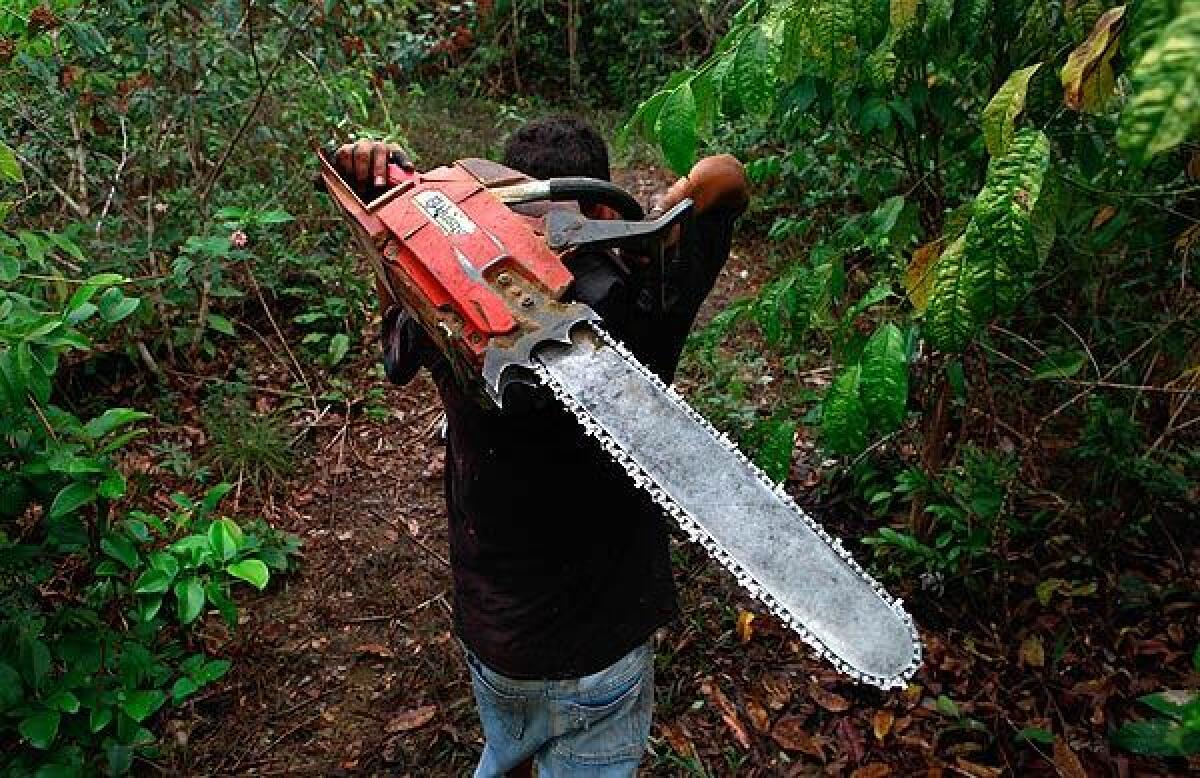
Already, the greatest driver of deforestation is agriculture. In Brazil, people cut trees to create pasture for cattle or to grow soy. In Indonesia, vast tracts of forest have been lost to palm oil plantations.
And climate change is posing new challenges for farmers, the report found. Warmer temperatures and increased drought stress plants. Invasive pests and extreme weather damage harvests. And soil erosion and land degradation reduce soil fertility. Problems like these are already threatening food security, and their economic toll is a factor driving increased migration, the report said.
Bruce McCarl, an agricultural economist at Texas A&M who worked on the report, said researchers must pour more resources into developing new crop varieties that will help growers increase their yields in a warming world. In addition, farmers could adopt practices that increase the amount of carbon in the soil, helping their plants and combating climate change at the same time.
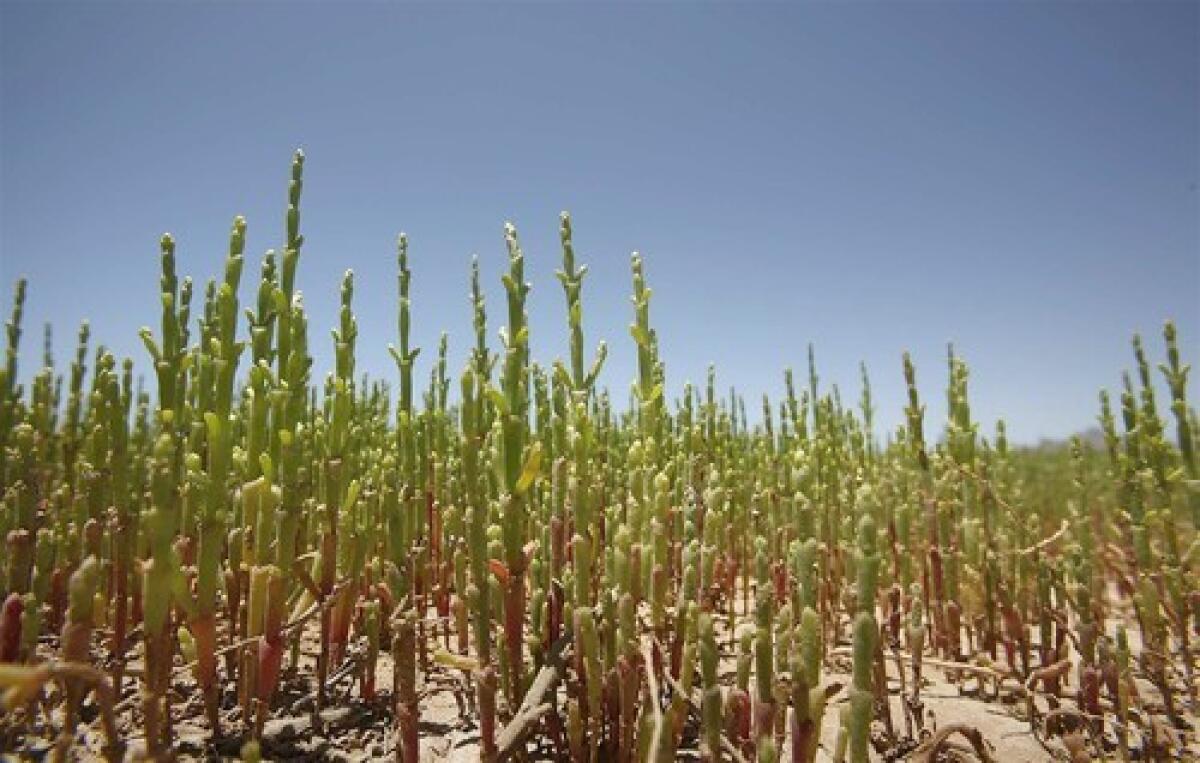
Many pathways to meeting the Paris goals rely heavily on planting biofuel crops or seeding trees in historically unforested areas. But the report warned that such actions will only complicate the picture by placing yet more demands on the landscape.
Ultimately, to feed a growing population and preserve forests, we will need to produce more food without using more land. And one way to do that is for people to eat more plant-based diets, the report said.
The IPCC does not make dietary recommendations, Skea said. However, he said, the science makes clear “that there are certain types of diets that have a lower carbon footprint and put less pressures on land.”
Animal products — particularly beef — require more land to deliver the same nutritional benefits. That’s because livestock needs land for pasture on top of the land used to grow feed crops like corn and soy. Research shows that reducing meat consumption could reduce demand for land and greenhouse gas emissions.
For example, a study published Thursday in the journal Scientific Reports found that if Americans switched to a nutritionally equivalent vegetarian diet based on foods like soy, squash and buckwheat, demand for cropland would fall by as much as 35% and diet-related greenhouse gas emissions would drop by nearly 40%. (The vegetarian diet would require more water, the study found.)
“This is a very positive message,” said coauthor Cynthia Rosenzweig, a researcher at NASA’s Goddard Institute for Space Studies. “There’s a double benefit, which is that then those diets are more healthy as well.”
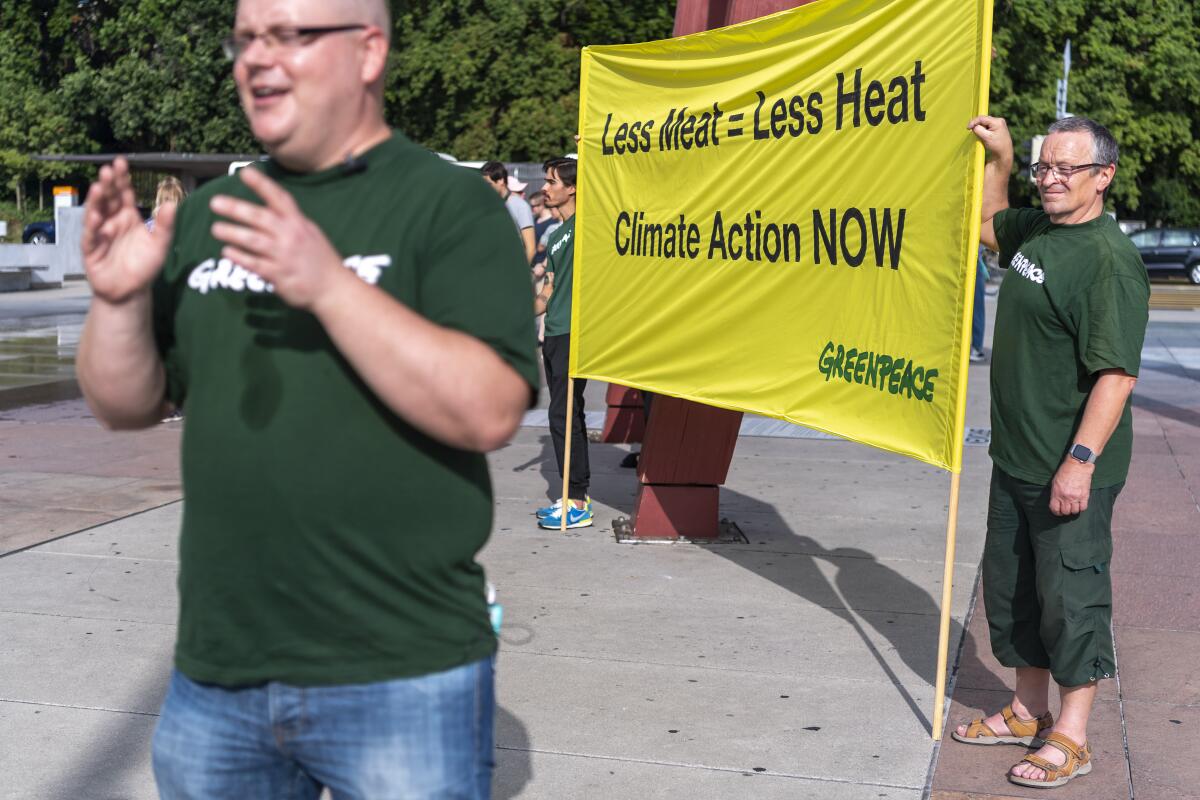
The IPCC report also highlighted ways to reduce greenhouse gas emissions from livestock through measures like better grazing land management, higher quality feeds and breeding animals with genetic advantages. “For each sector there is a potential for action,” Masson-Delmotte said.
The National Cattlemen’s Beef Assn. said beef can be part of a sustainable food system. In a statement, the trade group said beef cattle account for only a small percentage of total greenhouse gas emissions in the U.S. while converting inedible plants like grass into usable protein.
Eliminating food waste is also important, the report noted. Today, we throw away more than a quarter of the food we produce, which accounts for about a tenth of total greenhouse gas emissions.

Researchers said that promoting sustainable agriculture and land management would probably require a combination of regulations and incentives.
It’s difficult to imagine that happening in the U.S. in the near future. The Trump administration has prioritized rolling back many of the climate policies put in place under President Obama, including rules restricting land use. Instead, Trump has embraced the oil and gas industry, proposed opening most of the country’s coastal waters to offshore drilling, and ordered more logging on public land.
Regardless, changes in land use can’t do enough to meet the Paris climate targets on their own, McElwee said. If anything, the report shows that the longer we wait to reduce fossil fuel emissions, the more pressure we’ll put on the landscape, its ecosystems and our ability to produce food.
“We don’t have any time left,” McElwee said. “We need to do things now.”








